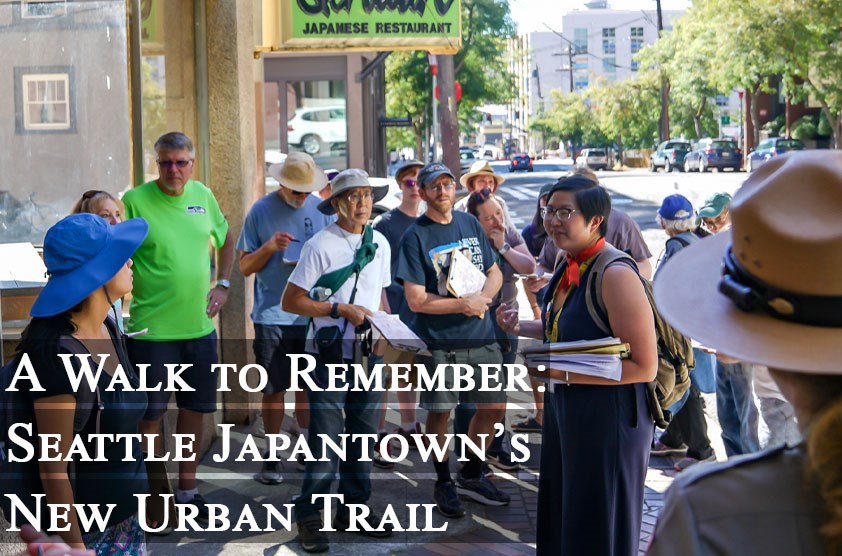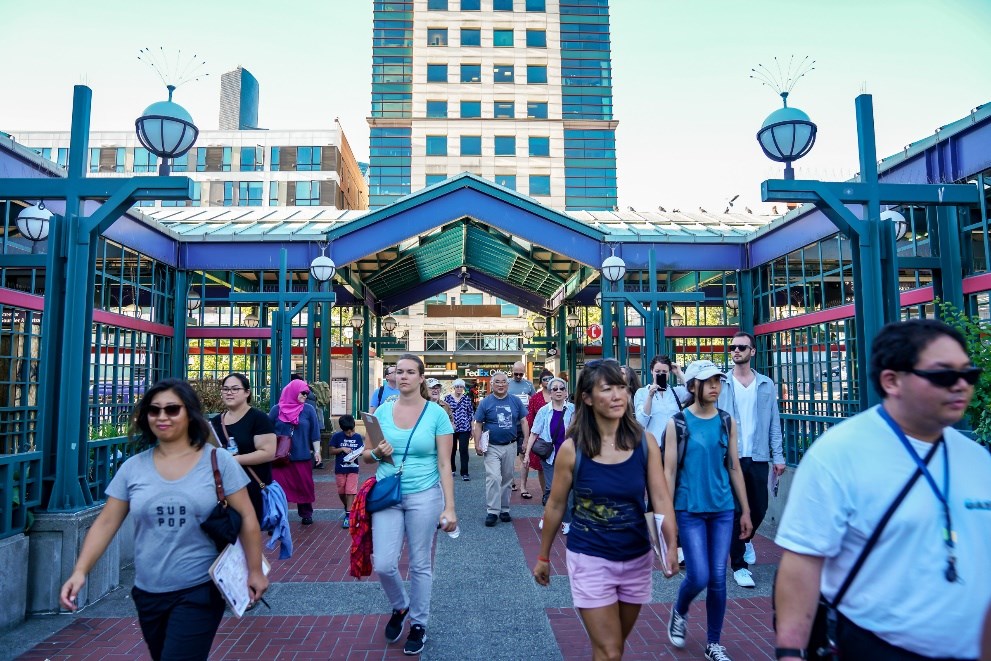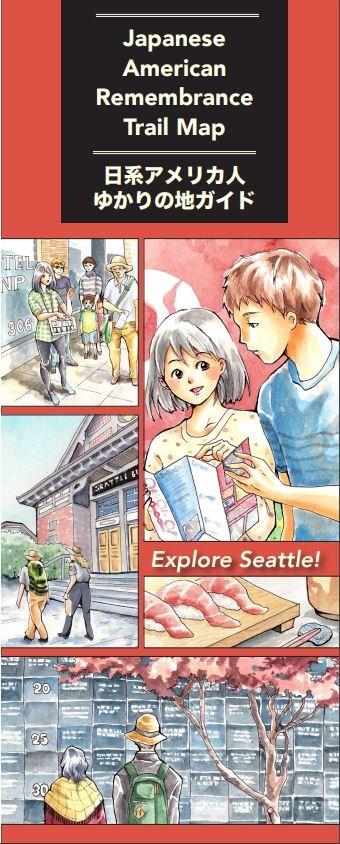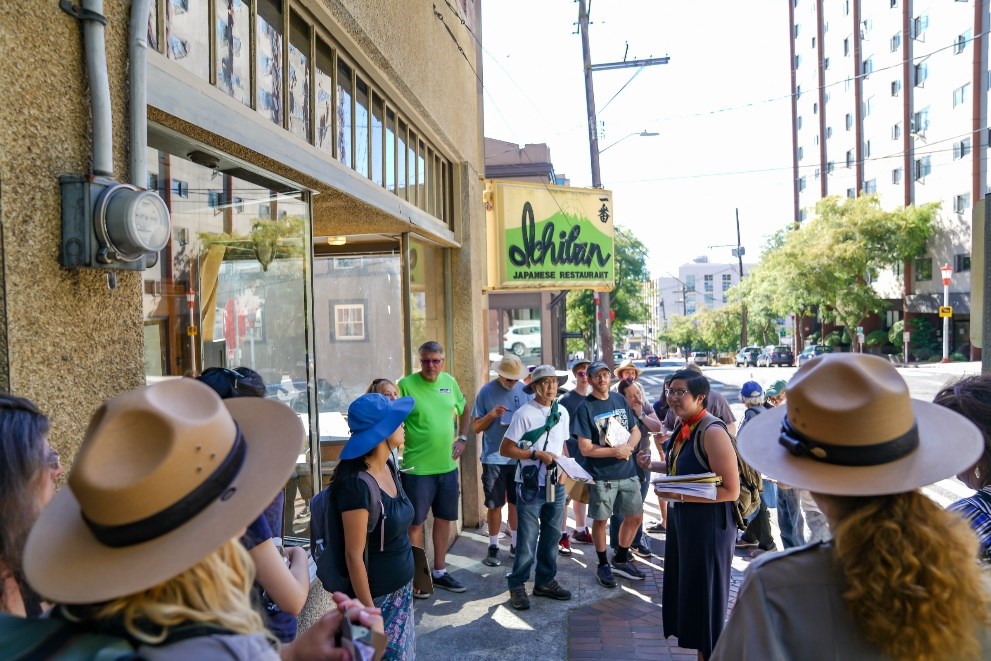Article
A Walk to Remember: Seattle Japantown's New Urban Trail

By Margaret Gach
On Feb. 19, 1942, two months after the attack on Pearl Harbor, President Franklin D. Roosevelt signed Executive Order 9066 authorizing the compulsory removal of Japanese-Americans to incarceration camps. In Seattle, home of the third largest Japanese-American community at the time, people were forced to sell their properties and businesses for low prices and move to landlocked states for several years during World War II.
Seattle’s Japanese-American community partnered with the National Park Service on the Japanese American Remembrance Trail, an urban hike in the city’s historic Japantown.
Bringing the Community’s Vision to Life
The Japanese American Remembrance Trail allows hikers to experience Nihonmachi’s – Japantown’s – past and present. From the Waterfall Garden Park designed by Masao Kinoshita, a former interned Japanese-American, to the Seattle Dojo, the oldest judo dojo in the United States, the 42 sites along the trail highlight the neighborhood’s rich history.
National Park Service – Rivers, Trails and Conservation Assistance program project specialists Stephanie Stroud and Sue Abbott partnered with Klondike Gold Rush National Historical Park and the Wing Luke Museum of the Asian Pacific American Experience, a National Park Service affiliated area to bring the stories of Japantown to the forefront of the city’s history. The core planning group settled on the idea of an urban trail that could attract visitors, encourage outdoor activity in the aging Japantown population and connect the past to the future.

Due to the large amount of sites collected through the community-led planning process, challenges included narrowing down which sites to include along the trail.
Wing Luke Museum of the Asian Pacific American Experience deputy executive director, Cassie Chinn, said technical assistance from the National Park Service was effective in helping analyze the geography, testing routes and organizing community feedback.
“It worked out really well in regards to aligning the National Park Service planning and community engagement with the Wing Luke desire for a community-led process,” Chinn said.
Stroud and Abbott focused on the path’s safety as well as opportunities to encourage outdoor recreation. The illustrated trail map that features the 42 sites along the route highlights various fitness activities, such as “hill challenges” and “Hiro’s Walk,” a half-mile hike that follows the daily excursion of World War II veteran and neighborhood resident Hiro Nishimura.
"The community trusts us with their stories, and that’s a great gift.” – Deputy Executive Director, Cassie Chinn.
Pilot tours, organized by the planning team in 2017 to gather feedback about the trail, were so popular that they had long waiting lists. Tour guides took neighborhood residents and visitors of all ages through past and present Japantown.
The tour groups stopped by the Panama Hotel where Japanese-American families stored their luggage during incarceration and the North American Post where the oldest Japanese-language newspaper in the Pacific Northwest is published. They paused in front of Uwajimaya, a popular Asian food store, and learned of its proximity to the former Immigration and Naturalization Services building, where Japanese community leaders were first detained during wartime hysteria.

“We had seniors that had lived in the neighborhood for decades – and they took the tour, shared their stories and learned from others,” Stroud said.
According to Stroud, the planning process centered around the residents’ vision to preserve the history of Japanese-Americans in Seattle and how President Roosevelt’s Executive Order 9066 impacted and shaped the community.
According to landscape architect and graphic designer Arisa Nakamura, the involvement of the National Park Service has brought more people to the Japanese Cultural and Community Center of Washington, one of the anchor sites for the trail. Nakamura designed the map for the trail which features illustrations and few historic facts about each site.

“We see people inviting their families or friends to walk around the district and stop at our cultural center,” Nakamura said. “I think if there is no means to remember this kind of history, history is very easily forgotten.”
The planners hope to use the suggestions they’ve collected over the past year to expand the project, potentially with permanent markers for the sites or with a mobile tour app.
Bringing the trail to its full potential is a trek Chinn takes seriously.
“The community trusts us with their stories,” she said. “And that’s a great gift.”
